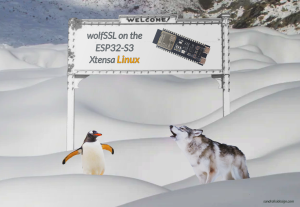We are excited to tell you about our partner collaboration with ST Micro! This collaboration is a video series about wolfBoot, a secure bootloader and the STM32, a family of 32-bit microcontrollers.
This is a 4 part video series showing how to use wolfBoot on various STM32 microcontrollers.
Video 1: wolfBoot for STM32, Part 1: Overview
“Overview of the wolfSSL products and the wolfBoot support for STM32 devices. The wolfBoot product features such as secure boot, measured boot, encrypted partitions and root of trust (in the bootloader, TPM or secure element). Comparison of the SBSFU, TFM and wolfBoot options for STM32 micro-controllers. Implementation details for design of wolfBoot and how the partitions are defined.”
Video 2: wolfBoot for STM32, Part 2: Getting Started
“How to download wolfBoot, where to find files and documentation. The wolfBoot product features such as secure boot, measured boot, encrypted partitions and root of trust (in the bootloader, TPM or secure element).”
Video 3: wolfBoot for STM32, Part 3: Out of the Box Experience
“How to configure, build, run, and debug wolfBoot on NUCLEO-G071RB board.”
Video 4: wolfBoot for STM32, Part 4: STM32U5
“How to configure, build, run and debug wolfBoot on STM32U5 (B-U585I-IOT02A) development board”
Please contact us at facts@wolfssl.com if you would like to receive a copy of the slides.
Additional Resources
https://www.st.com/en/embedded-software/wolfboot.html
https://www.wolfssl.com/products/wolfboot/
Please contact us at facts@wolfssl.com, or call us at +1 425 245 8247with any questions about the webinar.
For technical support, please contact support@wolfssl.com or view our FAQ page.
In the meanwhile, check out the wolfSSL embedded SSL/TLS library, star us on Github, and learn more about the latest TLS 1.3 is available in wolfSSL.
If you have questions about any of the above, please contact us at facts@wolfssl.com or +1 425 245 8247.


